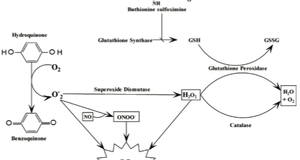Alabama was cited among the states with greatest prevalence of diabetes for the past five years (Diabetes Surveillance, 2009). There is considerable variation between the counties of Alabama with regards to prevalence of diabetes (Diabetes Surveillance, 2009). Physical inactivity besides diet and obesity is cited as a factor for the cause and progression of diabetes [2]. This study attempts to determine a connection between these observations by comparing the association between physical inactivity and diabetes in urban and rural populations of Alabama
Methods: The center for Disease Control (CDC) presented the 2009 Census data based on self reported surveys for Alabama counties with regards to Diabetes. We analyzed their data to determine the means and correlation coefficient for Physical Inactivity and Diabetes in two groups of counties of Alabama – the ten most populous (predominantly “urban”) and the ten least populated (predominantly “rural”).
Results: The mean prevalence of diabetes in the urban population was 11.7 and that for the rural population was 13.35. The mean physical inactivity index (low being more active) for the urban group was 36 and that for the rural group was 27. Both these differences between the means were not statistically significant. On the other hand, diabetes in the most populous counties was positively correlated with physical inactivity (correlation coefficient, r = 0.77 at a confidence level of 1 %) and it was not correlated in the least populous counties (r = 0.099, not significant).
Discussion: The absence of any strong correlation between the physical inactivity and diabetes prevalence in the least populous counties suggests that there may be other factors that influence diabetes in this group. There may be a difference between rural and more urban counties in Alabama with regards to the factors associated with diabetes.
Conclusions: Rural counties group exhibit almost no correlation between physical inactivity and prevalence of diabetes unlike the most populous group. This suggests that there may be a fundamental difference between the rural and urban populations with regards to factors associated with diabetes and this should be explored further to confirm and expand on this finding.
Alabama was listed among the top five states in terms of prevalence of Diabetes in the nation [1]. Factors such as diet, obesity, and physical inactivity are cited in literature as factors for the cause and progression of diabetes [2, 3, 4, 5]. It is also noted that there is considerable variation between counties of Alabama with regards to the prevalence of diabetes in that state [1]. This prompts the following question: Is the difference between the counties due to any of the factors listed above, namely, diet, obesity, physical inactivity, or is it due to some other fundamental difference between the counties?
To correlate physical inactivity and prevalence of diabetes in the ten most populated and the ten least populated counties in Alabama. We assign the label of urban for the most populous states and rural for the least populous states for convenience.
The average prevalence of diabetes and physical inactivity data for the counties of Alabama was derived from the census data for 2009. This was presented by Center for Disease Control (CDC) [1]. This data was from a self-assessment survey of the residents of the counties of Alabama. Specifically, Diabetes was assessed as follows. Respondents were considered to have diabetes if they responded "yes" to the question, "Has a doctor ever told you that you have diabetes?" Women who indicated that they only had diabetes during pregnancy were not considered to have diabetes.Physical inactivity was assessed by a CDC questionnaire as follows. Respondents were considered to be physically inactive if they answered "no" to the question, "During the past month, other than your regular job, did you participate in any physical activities or exercises such as running, calisthenics, golf, gardening, or walking for exercise?"
We calculated the averages and correlation coefficient between these two parameters for the urban (ten most populous) and relatively rural (ten least populated) counties of Alabama.
Detailed data on prevalence of diabetes and self-reported physical inactivity for the counties of Alabama as gathered by the CDC is presented in Tables 1 and 2, respectively (Appendix). The mean prevalence of diabetes in the urban population was 11.7 and that for the rural population was 13.35. This difference was not statistically significant by Student t-test. There was a lower physical inactivity in the less populated counties group (index of 27) compared to the more populated counties group (36). Again, this difference was not statistically significant.
However, the correlation coefficient (R) for the association between physical inactivity and prevalence of diabetes for the most populous counties was 0.77 (at 1 % significance) and that for the least populous counties was less than 0.099 (not significant). Standard statistical methods were followed [6]. The linear regression with y-intercept, slope, and square of the Pearson Product moment correlation coefficient (R2) are displayed in Figure 1, below:
Figure 1: Linear Regression and Scatter Plot of Prevalence of Diagnosed Diabetes and Physical Inactivity Index in the Ten Most Populated and Ten Least Populated Counties of Alabama

Clearly, this study has limitations. One, physical inactivity of individuals may not be truly accurate due to the variability in self-assessment. Even the prevalence in diabetes based on self-reporting may not be accurate. Second, physical inactivity of a population in a given time period could not have caused diabetes in that same time period. In other words, physical inactivity may have occurred in some individuals and diabetes may have been noted in others. Also, this study does not distinguish between Type I and Type II diabetes.
Despite these two obvious limitations, the present study still has an interesting finding. Physical inactivity was correlated positively with prevalence of diabetes in the more populous counties which is consistent with numerous other population studies [2, 3, 4, 5]. However, the absence of a similar correlation in the least populous counties suggests that there may be other factors that influence diabetes in these populations. For example, diet may be a bigger factor in this group. The important point is that there may be a difference between rural and more urban counties of Alabama with regards to factors that are associated with prevalence of diabetes. At the very least, we can state that not all counties are the same. Rural and urban populations may have different influences and that they must be treated as two different entities.
Further work may be conducted by performing a retrospective case-controlled study in which a number of individuals with diabetes in the two populations (urban and rural) are followed back in time to determine other factors that may be associated with diabetes. These factors may include age of availability of health insurance and healthcare before they were diagnosed with diabetes, education, income, etc. Such a study may shed more light into the differences between the rural and urban populations, if there are truly any.
Least populous counties group exhibit almost no correlation between physical inactivity and prevalence of diabetes and the most populous counties group exhibit positive correlation between physical inactivity and prevalence of diabetes. This suggests that there may be a fundamental difference between the rural and urban populations with regards to factors associated with diabetes and should be explored further to confirm and expand on this finding.
- National Diabetes Surveillance System. (2009) Retrieved August 20, 2012, from the Centers for Disease Control and Prevention. http://apps.nccd.cdc.gov/DDTSTRS/default.aspx
- Krishka A., Knowler W., et al (1989) “Development of Questionnaire to Examine Relationship of Physical Activity and Diabetes in Pima Indians”, Diabetes Care, Vol. 13 No. 4, pp 401-411
- Pierpaolo F., Chiara L., et al. (2006) “Exercise and Diabetes”, Acta Bio Medica, Vol. 77 No. 1, pp 14-17
- Chipkin S. Klugh S., et al, (2001) “Exercise in Secondary Prevention and Cardiac Rehabilitation”, Cardiology Clinics, Vol. 19 No. 3
- Agurs-Collins T., Ten Have T., et al (1997) “A Randomized Controlled Trial of Weight Reduction and Exercise for Diabetes Management in Older African-American Subjects”, Diabetes Care, Vol. 20 No. 10
- Croxton, F. (2007) Elementary statistics with applications in medicine and the biological sciences. pp. 126, 316. Dover Publications, Inc. New York
Table 1: Prevalence of Diabetes in Counties of Alabama
| County |
Percentage |
| Perry County |
17.8 |
| Sumter County |
16.8 |
| Lowndes County |
16.4 |
| Greene County |
16.2 |
| Bullock County |
15.6 |
| Wilcox County |
15.5 |
| Pike County |
15 |
| Marengo County |
14.8 |
| Butler County |
14.6 |
| Choctaw County |
14.3 |
| Chambers County |
14.2 |
| Dallas County |
14.2 |
| Macon County |
14.2 |
| Conecuh County |
14.1 |
| Hale County |
14 |
| Pickens County |
13.9 |
| Montgomery County |
13.5 |
| Franklin County |
13.3 |
| Talladega County |
13.3 |
| Barbour County |
13.2 |
| Walker County |
13 |
| Calhoun County |
12.9 |
| Clarke County |
12.9 |
| Coosa County |
12.8 |
| Henry County |
12.8 |
| Clay County |
12.7 |
| Dale County |
12.6 |
| Randolph County |
12.6 |
| Coffee County |
12.5 |
| Russell County |
12.5 |
| St. Clair County |
12.5 |
| Lawrence County |
12.4 |
| Crenshaw County |
12.2 |
| Fayette County |
12.2 |
| Lauderdale County |
12.2 |
| Monroe County |
12.2 |
| Escambia County |
12.1 |
| Geneva County |
12 |
| Jackson County |
12 |
| Tallapoosa County |
12 |
| Cullman County |
11.9 |
| Elmore County |
11.8 |
| Etowah County |
11.8 |
| Tuscaloosa County |
11.8 |
| Autauga County |
11.7 |
| Colbert County |
11.7 |
| Jefferson County |
11.7 |
| Mobile County |
11.6 |
| Blount County |
11.5 |
| Washington County |
11.4 |
| Lee County |
11.3 |
| Bibb County |
11.2 |
| Cherokee County |
11.2 |
| Houston County |
11.2 |
| Madison County |
11.2 |
| Chilton County |
11.1 |
| Cleburne County |
11.1 |
| Lamar County |
11.1 |
| Covington County |
10.9 |
| Marshall County |
10.9 |
| Marion County |
10.6 |
| DeKalb County |
10.3 |
| Winston County |
10.3 |
| Morgan County |
10.2 |
| Limestone County |
10 |
| Baldwin County |
9.9 |
| Shelby County |
8.3 |
Table 2: Prevalence of Physical Inactivity in Counties of Alabama
| County |
Percentage |
| Lowndes County |
37.5 |
| Greene County |
37.3 |
| Clarke County |
37.1 |
| Escambia County |
37 |
| Walker County |
36.9 |
| Bibb County |
36.8 |
| Russell County |
36.5 |
| Franklin County |
36.4 |
| Clay County |
36.2 |
| Covington County |
36 |
| Butler County |
35.9 |
| Lawrence County |
35.3 |
| Hale County |
35.2 |
| Blount County |
35.1 |
| Chambers County |
35 |
| Conecuh County |
34.9 |
| Marengo County |
34.8 |
| St. Clair County |
34.7 |
| Cherokee County |
34.6 |
| Talladega County |
34.6 |
| Marion County |
34.5 |
| Lamar County |
34.4 |
| Wilcox County |
34.4 |
| Geneva County |
34.2 |
| Choctaw County |
34.1 |
| Perry County |
34.1 |
| Barbour County |
33.8 |
| Randolph County |
33.8 |
| Colbert County |
33.7 |
| Coosa County |
33.7 |
| Calhoun County |
33.3 |
| Dallas County |
33.3 |
| Etowah County |
33.3 |
| Cleburne County |
32.8 |
| Crenshaw County |
32.5 |
| Houston County |
32.5 |
| Pickens County |
32.5 |
| Winston County |
32.4 |
| Pike County |
32.3 |
| Sumter County |
32.3 |
| Lauderdale County |
32 |
| Washington County |
32 |
| Autauga County |
31.9 |
| Fayette County |
31.8 |
| Elmore County |
31.5 |
| Marshall County |
31.5 |
| Monroe County |
31.2 |
| Macon County |
31.1 |
| Dale County |
31 |
| Bullock County |
30.9 |
| Limestone County |
30.9 |
| Chilton County |
30.4 |
| Mobile County |
30.2 |
| Henry County |
30.1 |
| Tallapoosa County |
30 |
| Montgomery County |
29.5 |
| Jackson County |
29.3 |
| Jefferson County |
28.8 |
| Tuscaloosa County |
28.8 |
| Cullman County |
28.7 |
| Coffee County |
28.2 |
| Lee County |
27.9 |
| DeKalb County |
27 |
| Morgan County |
26.6 |
| Madison County |
24.9 |
| Baldwin County |
24.2 |
| Shelby County |
23.5 |




















